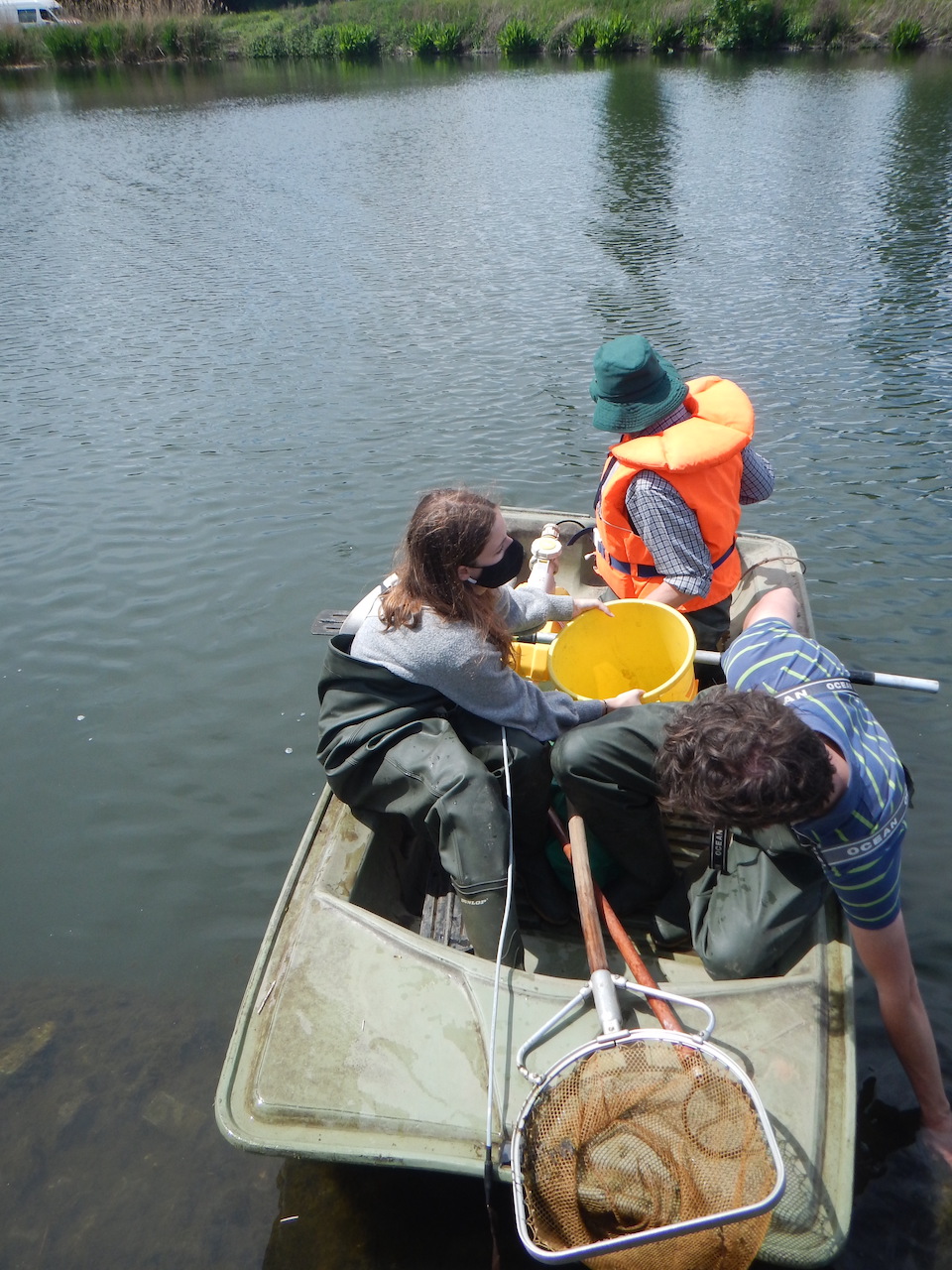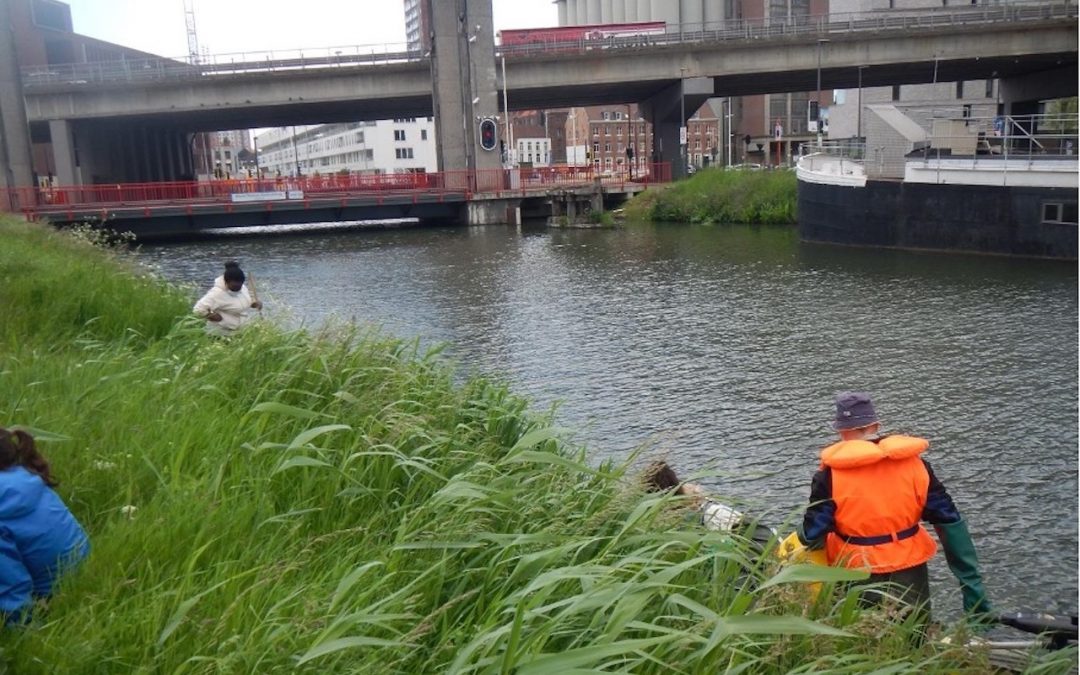By Invasive Species Group
Our Invasive Perspective
The sustainable development goals 6 and 14 highlights the importance of water for both humans as well as aquatic organisms, as a water group we undertook the responsibility of analyzing the rivers around Leuven by examining biotic and abiotic factors. Although Living Lab in its entirety consisted of various teams that looked at all aspects of sustainable development, our focus was on the waters of Rivers Djile, channel Leuven- Djile and Ijse.

Looking for Macroinvertebrates on the banks of river Dijle [organization academic year 2020-2021 © SUSDEV]
The SDG mainly targets reducing water pollution, raising water use efficiency, and protecting ecosystems by using a range of policy, economic, and financial tools that have proven to be successful. In Leuven, the rivers have different fauna and flora found at various parts of the streams. The variance is attributed to various factors such as availability of oxygen, availability of invasive species that increase competition for resources and pollution. Some of the invasive fish species that we identified include Topmouth Gudgeon ((Pseudorasbora parva), Pumpkinseed (Lepomis gibbosus), Rainbow trout (Oncorhynchus mykiss) and the Round Goby (Neogobius melanostomus). According to Verreycken et al., (2007) invasive species in a river usually change the river dynamics by altering the aquatic ecosystem which may cause displacement of some species.

An Eel [organization academic year 2020-2021 © SUSDEV]
The management for rivers in Belgium cannot be achieved by scholars alone and needs an approach that brings all the stakeholders together. A good example of such an approach is the Integrated Water Resources Management. Integrated Water Resources Management brings together stakeholders from different sectors such as KU Leuven and levels of government to co-ordinate the development and management of water resources around Leuven and beyond. The main objective of this approach is to strike a balance by maximising socio economic welfare in an equitable manner which would impact negatively on sustainability of vital ecosystems.

Boat ride along river Dijle[organization academic year 2020-2021 © SUSDEV]
We came to the realization that rivers around Flanders have been altered through embankments, straightening, damming and other interventions, affecting their natural cleaning ability. Water treatment has increased in the last decades, significantly improving water released into rivers but not enough to be considered good by ecological standards.
To build on this momentum set up by our Living Lab and drive of river conservations around Leuven; action, real political drive, dedicated leadership, and firm commitments are needed. The Flemish government needs to place rivers and river protection at the heart of their national development strategies, which in turn need to be supported by development partners and civil society. All of us here today have a role to play.
Reference
Verreycken, H., Anseeuw, D., Van Thuyne, G., Quataert, P., & Belpaire, C. (2007). The non‐indigenous freshwater fishes of Flanders (Belgium): review, status and trends over the last decade. Journal of Fish Biology, 71, 160-172.



